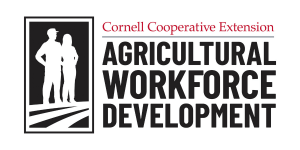Many isolated, rural communities avoided the coronavirus for most of 2020 but, as is the nature of viruses, it has now penetrated everywhere, even to the remotest places. As a result, some farm managers are now dealing with actual and suspected cases in their workforce for the first time. Often, farm employees are not sick or tested positive for the virus but they may have been exposed through a friend, family member, or other social contact. In these cases health authorities will issue quarantine orders, it’s worth remembering how quarantine and isolation are different. The CDC defines them in this way: “Quarantine keeps someone who might have been exposed to the virus away from others. Isolation keeps someone who is infected with the virus away from others, even in their home.”
Following the CDC, on December 26, 2020, New York shortened the quarantine guidance to only 10 days, down from the original 14, for persons who are asymptomatic, displaying no symptoms of COVID-19.
Farm Employees are Essential Workers
Some managers are struggling right now with many employee absences as the virus races through rural communities and quarantine orders are commonplace. Let’s recall that farm employees are essential workers and can continue to work while in quarantine under certain conditions. Read the Interim Guidance for Prevention and Response of COVID-19 at Farms, the COVID-19 Farm Operator Checklist, from NY State Departments of Health and Ag & Markets. See pages 8-9 of the Interim Guidance. Here is text from the Checklist about asymptomatic, quarantined, essential workers:
“Workers may work if they are considered essential to the operations of the farm and:
- Do not display any symptoms of COVID-19;
- Remain in quarantine when not at work, either at home or at a location designated by the operator that meets LHD quarantine requirements;
- Undergo temperature monitoring and symptom checks upon arrival to work and at least every 12 hours while at work, and self-monitor (i.e. take temperature, assess for symptoms) twice a day when not at work;
- Wear an acceptable face covering while in the presence of any other individual; and
- Immediately stop work and notify their supervisor if they develop ANY symptoms consistent with COVID-19. If this occurs, the LHD may be consulted on next steps as outlined below.”
So, farm employees can continue to work if they don’t have symptoms and are only quarantined, not isolated. Those who are isolated due to a positive test or active symptoms are not allowed to work.
Also, at this point, all businesses should have a New York COVID Business Safety Plan in place. Your plan should include routine screening of employees when they report for work. See this page for a template and farm-specific guidance to help complete your plan.
For a weekly update see the Coronavirus Booster from Institute for Food Safety at Cornell University.
Vaccines!
Development of COVID-19 vaccines in less than one year is an astounding achievement, and so too will be worldwide distribution. Many of us want the vaccine as soon as possible. On January 5, 2021 New York Deputy Commissioner of Agriculture Jennifer Trodden issued the following vaccine update:
Vaccination Plan: Yesterday the Governor announced that we are still in Phase 1a. The entire update the Governor provided can be found here:https://www.governor.ny.gov/news/governor-cuomo-updates-new-yorkers-vaccination-efforts-across-new-york. As a reminder “food and agriculture essential workers” are designated as employees in Phase 1b. We will provide an update as soon as the Governor announces the beginning of Phase 1b.
Upcoming Educational Programs
January 11, 2021: Becker Forum Address a Dynamic Labor Situation
January 27, 2021: Cornell launches online supervisory leadership series with: Transitioning to Supervisor Course, register now!
By Richard Stup, Cornell University. Permission granted to repost, quote, and reprint with author attribution. The post COVID-19 Updates for the Farm Workforce appeared first in The Ag Workforce Journal


